The Creative Curriculum for Preschool introduces a project-based approach, supporting transition and building community through structured studies and resources, helping teachers guide young learners effectively․
1․1 Overview of the Creative Curriculum for Preschool
The Creative Curriculum for Preschool is a project-based approach designed to foster young learners’ natural curiosity and creativity․ It focuses on building a strong foundation through exploration, play, and structured studies․ The curriculum emphasizes social-emotional growth, literacy, math, and science skills․ The beginning of the year study is a critical component, helping children transition smoothly into the classroom environment․ It includes five core studies—Balls, Clothes, Trees, Buildings, and Recycle—each with three stages to guide learning․ This framework supports teachers in creating engaging, developmentally appropriate experiences․
1․2 Importance of the Beginning of the Year Study
The beginning of the year study is a critical period for transitioning children into the classroom environment․ It helps students say goodbye to their families, become familiar with routines, and build trust with teachers․ This five-week unit supports social-emotional growth, fostering a sense of classroom community․ It also introduces foundational skills, easing the adjustment for both children and educators․ By focusing on exploration and familiarity, the study lays the groundwork for a successful year, ensuring a smooth and confident start for all learners․
1․3 Key Features of the Creative Curriculum Guide
The Creative Curriculum Guide offers comprehensive resources for preschool educators, featuring five core studies: Balls, Clothes, Trees, Buildings, and Recycle․ Each study includes three main stages: exploration, investigation, and conclusion․ The guide provides weekly planning forms, curriculum content, and step-by-step instructions for implementing studies․ It also includes digital tools like MyTeachingStrategies and Mighty Minutes for focused learning․ Designed to support teachers, the guide offers best practices, project-based approaches, and strategies for building classroom community, making it a valuable tool for a successful academic year․
Key Components of the Creative Curriculum
The Creative Curriculum includes five core studies (Balls, Clothes, Trees, Buildings, Recycle), weekly planning forms, and a project-based approach to foster learning and community building․
2․1 The Five Core Studies: Balls, Clothes, Trees, Buildings, and Recycle
The Creative Curriculum features five core studies: Balls, Clothes, Trees, Buildings, and Recycle․ Each study is designed to engage preschoolers in hands-on, project-based learning․ These studies introduce foundational concepts and routines, fostering curiosity and collaboration․ Through exploration, children develop essential skills like observation, problem-solving, and critical thinking․ Each study is supported by a teaching guide, providing structured activities and resources to promote meaningful learning experiences․ These core studies lay the groundwork for a year of discovery and growth․
2․2 The Three Main Stages of Each Study
, teachers introduce the topic, sparking curiosity․ The Exploration stage involves hands-on activities, encouraging discovery and learning․ Finally, the Conclusion stage allows children to reflect and celebrate their progress․ These stages are designed to promote deep understanding, engagement, and a sense of accomplishment, while fostering essential skills like collaboration and critical thinking․
2․3 Weekly Planning Forms and Curriculum Content
The Creative Curriculum provides structured weekly planning forms to organize and implement the curriculum effectively․ These forms help teachers align activities with study goals and objectives, ensuring a cohesive learning experience․ They include sections for daily schedules, activity plans, and materials needed․ By using these forms, educators can balance play-based learning with intentional teaching, fostering social, emotional, physical, and cognitive development․ This structured approach ensures consistency and alignment with the study’s overarching aims․

Benefits of the Creative Curriculum at the Beginning of the Year
The Creative Curriculum at the beginning of the year helps establish routines, supports transitions for students and families, and fosters a strong classroom community, promoting social-emotional growth․
3․1 Building Classroom Community
The Creative Curriculum fosters a strong classroom community by encouraging collaboration and shared experiences․ Group activities and discussions help students build relationships, develop empathy, and understand their roles within the group․ Teachers facilitate an inclusive environment where diverse perspectives are valued, promoting a sense of belonging․ This collective foundation supports social-emotional growth and creates a culture of mutual respect, making students feel connected and valued as active contributors to their learning community․
3․2 Supporting Transition for Students and Families
The Creative Curriculum helps ease the transition for students and families by establishing predictable routines and clear expectations․ Teachers create a welcoming environment that reduces anxiety and fosters a sense of security․ Families are supported through open communication and involvement in their child’s adjustment process․ Activities designed to help students explore their new surroundings further aid in making the transition smooth and stress-free, ensuring a positive start to the school year for all․
3․3 Establishing School Routines and Expectations
The Creative Curriculum emphasizes the importance of establishing consistent routines and clear expectations at the beginning of the year․ This helps students feel secure and understand classroom norms․ Teachers introduce daily schedules, role-playing activities, and visual reminders to reinforce these routines․ Clear communication of expectations ensures students know what is expected of them, fostering a structured and respectful learning environment from the start․
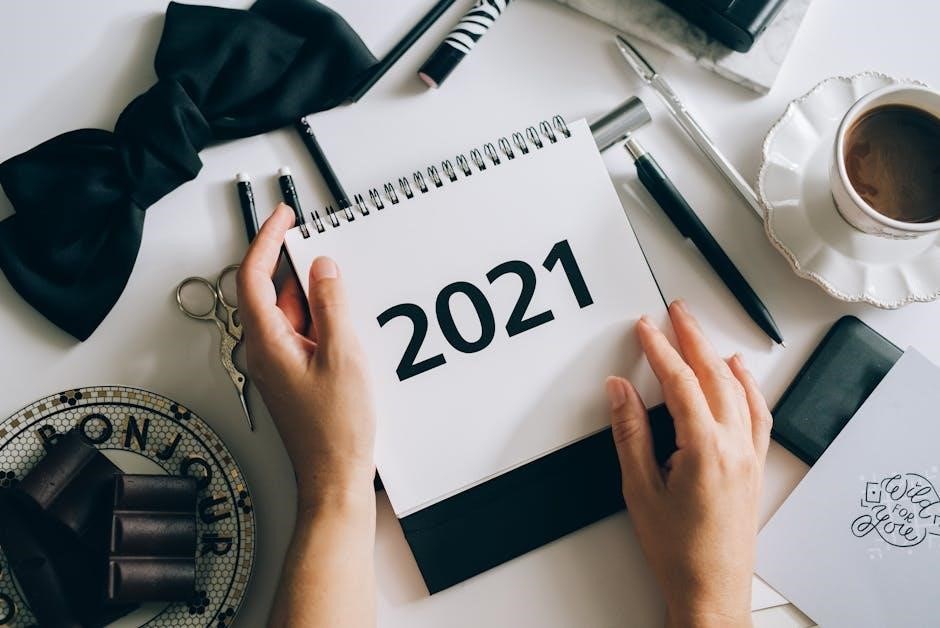
Implementing the Beginning of the Year Study
Guidance for exploring resources, step-by-step instructions, and best practices ensure a smooth transition into the study, fostering engagement and curiosity from the start․
4․1 Guidance for Exploring Resources
Guidance for exploring resources involves introducing materials that spark curiosity and engagement․ Teachers are encouraged to provide open-ended questions and prompts to guide children’s exploration․ This includes using the Creative Curriculum’s provided resources, such as books, manipulatives, and digital tools․ The MyTeachingStrategies platform offers additional support, with tips for rotating materials and creating inviting centers․ By fostering hands-on discovery, educators help children build foundational skills and make meaningful connections to the world around them, laying a strong foundation for the year ahead․
4․2 Step-by-Step Instructions for Starting the Year
Begin by setting up the classroom environment to promote exploration and comfort․ Introduce daily routines and expectations gradually, allowing children to adjust․ Conduct an initial assessment to understand each child’s skills and background․ Engage families through orientation or meetings to establish partnerships․ Start with the first project, such as the Balls study, to spark curiosity․ Plan the first weeks with play-based activities to build community and familiarity․ This structured approach ensures a smooth transition and sets the foundation for a successful year․
4․3 Best Practices for Introducing Studies
Start by generating curiosity with open-ended questions and meaningful provocations․ Use high-quality images and real-world materials to spark interest․ Introduce studies slowly, allowing time for exploration and connection to children’s lives․ Encourage wonder and inquiry through discussions and hands-on activities․ Create a safe, inclusive environment where all voices are heard․ Scaffold learning by building on prior knowledge and experiences․ Celebrate discoveries and document learning to reflect progress and deepen understanding․ This approach fosters engagement and lays a strong foundation for meaningful studies․
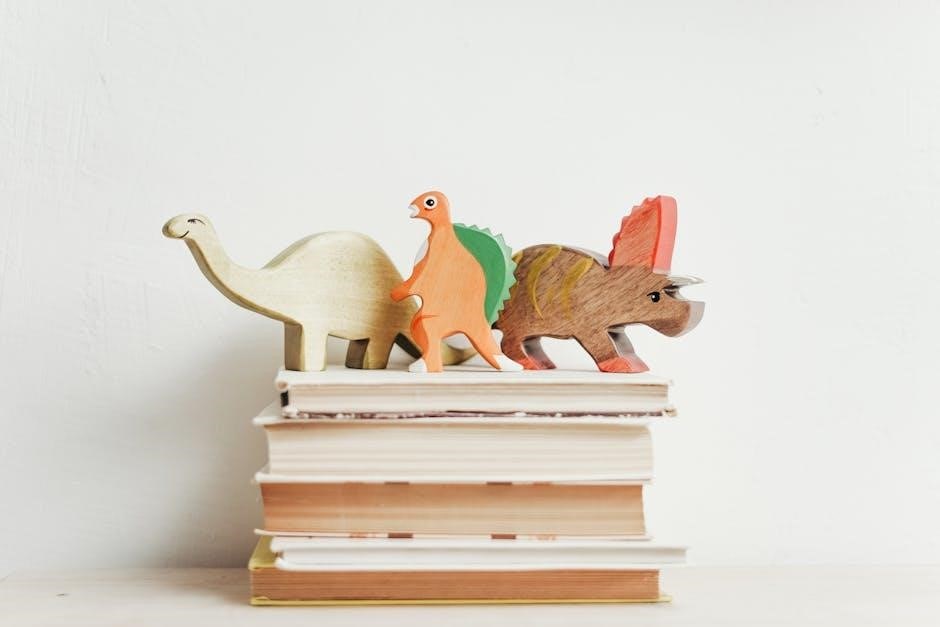
Strategies for Engaging Students
Foster curiosity through project-based learning, hands-on activities, and collaborative group work․ Encourage student-led explorations and provide opportunities for creative expression, promoting active participation and deeper understanding․
5․1 Activities to Support Student Familiarity with Classroom and School
Begin with a classroom tour, introducing students to key areas like learning centers, materials, and routines․ Use labeling activities to help students recognize objects and spaces․ Conduct group tours of the school, highlighting important locations such as restrooms, the library, and playground․ Incorporate scavenger hunts to encourage exploration and familiarity․ Create a classroom map together as a class project to reinforce spatial awareness․ Role-play school routines like lining up or using materials to build confidence․ These activities help students feel secure and connected to their new environment․
5․2 Encouraging Student Participation in Project-Based Learning
Start with collaborative groupings to foster teamwork and shared responsibility․ Encourage students to ask open-ended questions and explore topics of interest․ Provide choice boards allowing students to select activities that align with their strengths․ Use visual aids and examples to guide their understanding․ Celebrate student contributions and ideas, fostering a sense of ownership․ Offer opportunities for students to share their work, building confidence and pride in their learning․ This approach promotes active engagement and meaningful participation in project-based learning experiences․
5․3 Using Mighty Minutes for Focused Learning
Mighty Minutes are brief, structured intervals designed to reinforce skills or introduce new concepts․ Use these short sessions to engage students in focused activities like quick games, hands-on tasks, or group discussions․ These moments help build concentration and provide clear learning targets․ Incorporate visual timers to signal start and end times, ensuring students stay on track․ Rotate activities weekly to maintain interest and align with ongoing studies․ This strategy enhances engagement and reinforces learning in a fun, time-efficient manner․
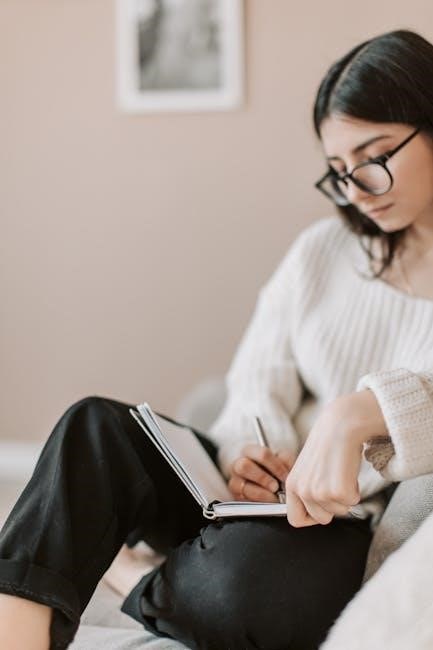
Communication with Families
Effective communication with families is crucial for supporting children’s development․ Regular updates, parent-teacher conferences, and involving families in activities foster collaboration and trust, ensuring a united approach to learning․
6․1 Building Partnerships with Families
Building partnerships with families is essential for fostering a collaborative learning environment․ By establishing open communication, mutual respect, and trust, educators can create a strong foundation for student success․ Families should feel valued as their child’s first teachers, with opportunities to contribute to their education․ Regular updates, parent-teacher conferences, and volunteer opportunities encourage active involvement․ This partnership not only supports academic growth but also helps families feel connected to the school community, promoting a shared commitment to their child’s development and well-being throughout the year․
6․2 Strategies for Communicating with Diverse Families
Effective communication with diverse families requires sensitivity, flexibility, and inclusivity․ Using translation tools or bilingual materials ensures all families can engage․ Regular updates via multiple platforms, such as emails, texts, or apps, accommodate different preferences․ Cultural awareness is key; incorporating families’ traditions and languages into communication fosters connection․ Offering flexible meeting times and providing visual aids can also bridge gaps․ By tailoring communication strategies to meet individual needs, educators create an inclusive environment where all families feel valued and informed about their child’s education and school experiences․
6․3 Involving Families in the Learning Process
Involving families in the learning process strengthens partnerships and enhances student outcomes․ Share classroom activities and projects through newsletters or digital platforms, inviting families to contribute ideas․ Encourage participation in parent-teacher conferences and volunteer opportunities, fostering collaboration․ Provide resources for families to extend learning at home, such as activity suggestions or curriculum guides․ By engaging families as active partners, educators create a supportive network that aligns home and school efforts, promoting a cohesive learning environment for preschoolers․

Digital Curriculum Resources
Digital resources like MyTeachingStrategies and online lesson planners streamline curriculum implementation, offering accessible materials and tools to support teachers in creating engaging, personalized learning experiences for preschoolers․
7․1 Utilizing MyTeachingStrategies Platform
The MyTeachingStrategies platform is a digital tool designed to support the Creative Curriculum, offering a comprehensive suite of resources for preschool teachers․ It provides customizable lesson plans, interactive activities, and progress-tracking features․ Teachers can access the “Beginning of the Year Study” PDF directly through the platform, along with aligned digital resources․ The platform also allows for sharing materials with colleagues and communicating with families, enhancing collaboration and consistency in instruction․ Its user-friendly interface makes it easy to integrate technology into daily teaching practices, ensuring a smooth and engaging experience for both educators and students․
7․2 Integrating Digital Tools into Lesson Planning
Integrating digital tools into lesson planning enhances the Creative Curriculum’s effectiveness; Teachers can access interactive activities, virtual field trips, and multimedia resources to engage students․ Digital tools allow for differentiated instruction, catering to various learning styles․ They also provide opportunities for real-time collaboration and feedback․ By incorporating technology, educators can create dynamic and inclusive learning environments that align with the “Beginning of the Year Study” goals․ This approach fosters innovation and prepares students for a technology-driven world while maintaining the curriculum’s foundational principles․
7․3 Accessing Additional Resources for the Creative Curriculum
To enhance teaching, additional resources for the Creative Curriculum can be accessed through official websites, educator forums, and digital libraries․ These resources include lesson extensions, printable materials, and multimedia content․ Teachers can explore webinars, workshops, and peer-sharing platforms to gain insights and practical ideas․ By utilizing these resources, educators can enrich their lesson plans and activities, ensuring a comprehensive and engaging implementation of the “Beginning of the Year Study” for preschoolers․
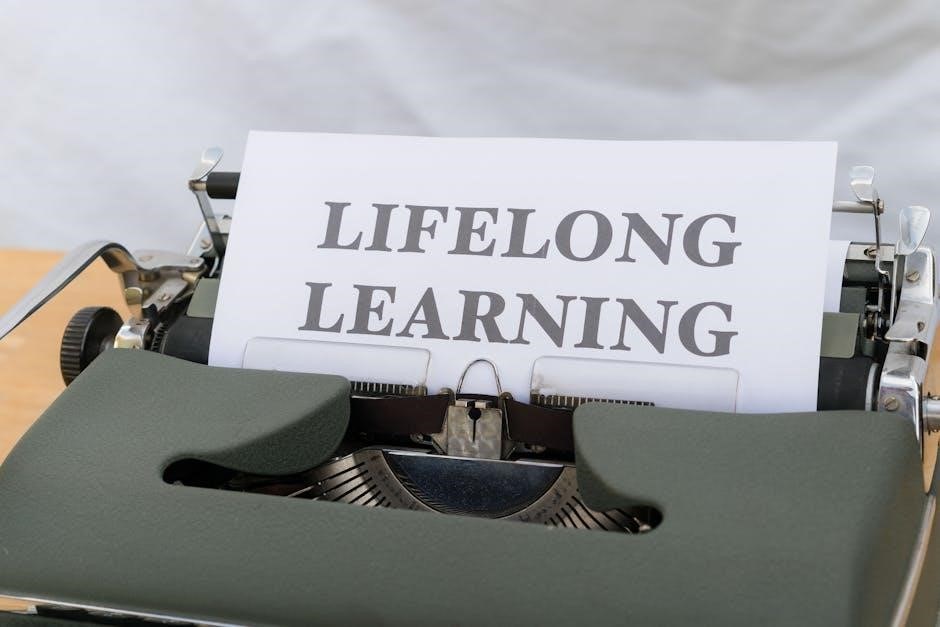
Activities and Lesson Plans
Engaging activities and lesson plans focus on play-based learning, fostering exploration and creativity․ These plans help students transition smoothly, building classroom community and foundational skills effectively․
8․1 Sample Activities for the First Six Weeks
The first six weeks focus on building relationships and routines․ Activities include classroom scavenger hunts, group games, and art projects to foster community and exploration․ Circle time introduces routines, while family connection activities help students share personal experiences․ Sensory play and storytime encourage creativity and language skills․ These activities lay the foundation for social-emotional growth and academic readiness, aligning with the Creative Curriculum’s emphasis on play-based learning and child-centered exploration․
8․2 Creating a Welcoming Classroom Environment
A welcoming classroom fosters a sense of belonging and curiosity․ Arrange learning centers to encourage exploration, and display student work to celebrate individuality․ Use soft lighting, cozy reading nooks, and organized materials to create a calming atmosphere․ Introduce visual schedules and labels to promote independence․ Incorporate diverse materials and inclusive decorations to reflect all students’ backgrounds․ Ensure accessibility for all learners by adapting spaces as needed․ This setup supports social-emotional growth and fosters a positive beginning to the year․
8․3 Hands-On Learning Experiences for Preschoolers
Hands-on learning engages preschoolers through exploration and discovery․ Activities like sensory play, art projects, and building with blocks foster creativity and problem-solving․ Use manipulatives to introduce math concepts and science experiments to spark curiosity․ Role-playing encourages social skills, while outdoor activities promote physical development․ These experiences align with the Creative Curriculum’s focus on active learning, helping children connect ideas and build foundational skills in a playful, meaningful way․ Such practices ensure preschoolers remain curious and motivated learners․
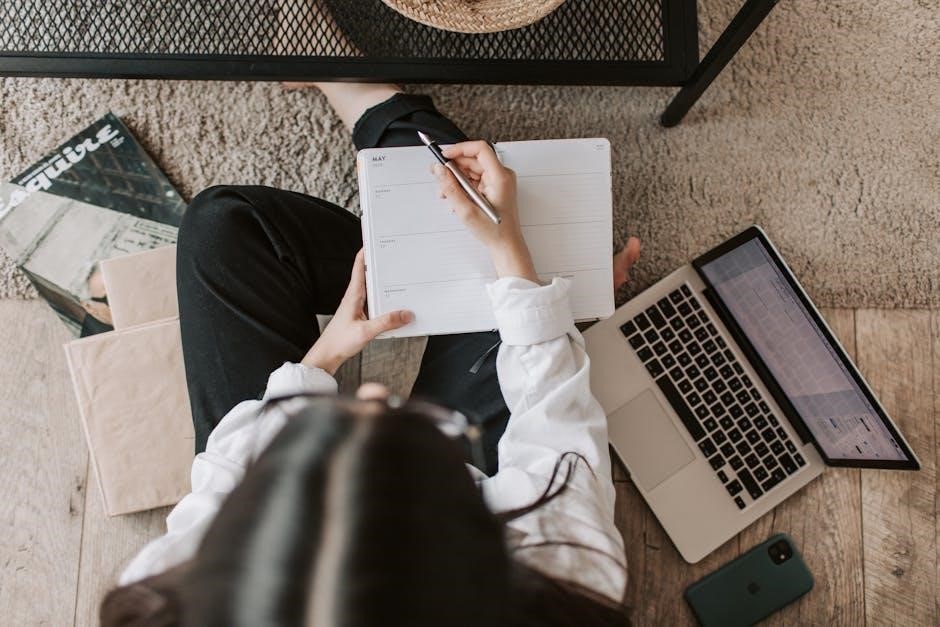
Assessment and Documentation
Assessment and documentation involve observing children’s progress through play․ Teachers use checklists, photos, and notes to track developmental milestones and guide instruction effectively․
9․1 Observing and Documenting Student Progress
Observing and documenting student progress is crucial for understanding each child’s development․ Teachers use tools like anecdotal records, checklists, and photos to capture learning moments․ This process helps identify patterns, strengths, and areas needing support․ Documentation also highlights children’s problem-solving skills and social interactions during play․ By tracking progress, educators can tailor instruction to meet individual needs and celebrate growth over time, ensuring a strong foundation for future learning․
9․2 Using Assessments to Guide Instruction
Assessments play a vital role in shaping instruction within the Creative Curriculum․ Teachers use developmental checklists and skill-level assessments to identify students’ strengths and areas for growth․ These tools provide insights into individual learning needs, guiding the creation of tailored activities․ By monitoring progress, educators can adjust lesson plans to better support students, ensuring they meet developmental milestones․ Regular assessment data helps foster a responsive and adaptive learning environment, enhancing overall educational outcomes for preschoolers․
9․3 Keeping Track of Developmental Milestones
Tracking developmental milestones is essential for understanding preschoolers’ growth․ Teachers use observation, documentation, and progress tracking tools to monitor children’s physical, social-emotional, and cognitive development; This process helps identify patterns, celebrate achievements, and address delays․ By maintaining detailed records, educators can share insights with families and adapt instruction to meet individual needs․ Regular updates ensure a comprehensive understanding of each child’s journey, fostering a supportive and inclusive learning environment throughout the year․
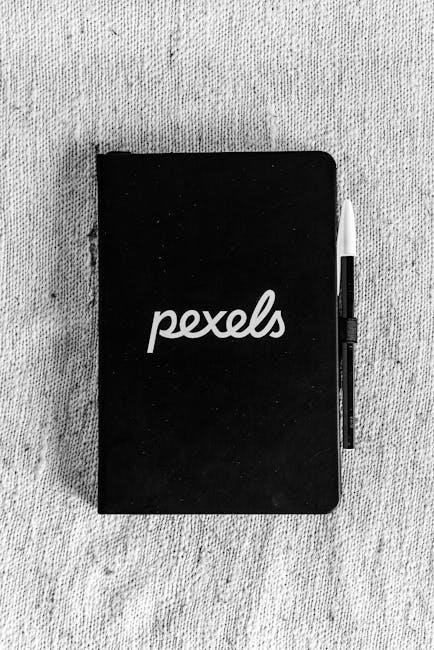
Addressing Diversity and Inclusion
Fostering an inclusive classroom culture respects diverse backgrounds, promotes equity, and ensures accessibility for all learners, collaborating with families and communities to celebrate individuality and cultural richness․
10․1 Supporting English-Language Learners
Creating a welcoming environment for English-language learners involves using visual aids, hands-on activities, and paired interactions with peers․ Teachers can scaffold instruction by breaking tasks into smaller steps and providing clear, simple language․ Encouraging participation through small-group work and one-on-one interactions helps build confidence․ Integrating students’ home languages and cultural practices into lessons fosters a sense of belonging․ By building on prior knowledge and experiences, educators ensure ELLs feel valued and supported in their language development journey․
10․2 Incorporating Cultural Awareness into Lessons
Incorporating cultural awareness into lessons fosters an inclusive and respectful classroom environment․ Teachers can integrate diverse materials, such as books and art, that reflect students’ backgrounds․ Encouraging discussions about traditions, holidays, and family practices promotes understanding․ Inviting families to share their cultural practices enriches the learning experience․ By valuing diversity, educators create a sense of belonging and empower students to appreciate differences, laying a foundation for mutual respect and global awareness in the classroom community․
10․3 Adapting Activities for Diverse Learning Needs
Adapting activities for diverse learning needs ensures all students can engage meaningfully․ Teachers can use differentiated instruction to cater to various learning styles and abilities․ This includes providing hands-on materials, visual aids, and flexible grouping strategies․ Incorporating choice boards allows students to select activities that match their interests and skill levels․ Additionally, scaffolding techniques and assistive technologies support learners with specific needs․ By tailoring instruction, educators create an inclusive environment where every child can thrive and reach their full potential throughout the year․

Challenges and Solutions
Transitioning students, managing behavior, and curriculum implementation can pose challenges․ Solutions include establishing clear routines, using positive reinforcement, and structured planning to ensure a smooth start․
11․1 Common Challenges in Implementing the Creative Curriculum
Teachers often face challenges such as managing classroom behavior, engaging diverse learners, and balancing play-based learning with academic goals․ Time management, especially during transitions, can be difficult․ Additionally, some educators may struggle with integrating project-based learning into their routines․ Families new to the curriculum may need extra support to understand its benefits․ Ensuring all students, including English-language learners, feel included can also present hurdles․ These challenges require thoughtful planning and adaptability․
11․2 Strategies for Managing Classroom Behavior
Establishing clear expectations and routines early helps manage behavior․ Use positive reinforcement techniques like verbal praise or visual reminders․ Create a structured yet flexible environment to minimize disruptions․ Encourage social-emotional learning by teaching self-regulation and empathy․ Active supervision and proactive interventions can prevent misbehavior․ Incorporate movement breaks and hands-on activities to maintain engagement․ Consistency and patience are key to fostering a respectful and focused classroom culture that supports all learners․
11․3 Overcoming the Overwhelming Nature of the Beginning of the Year
Managing the beginning of the year can feel overwhelming, but breaking tasks into smaller steps helps․ Prioritize setting up routines, classroom organization, and building relationships․ Use the Creative Curriculum’s resources to streamline planning and reduce stress․ Focus on one goal at a time, such as introducing materials or establishing communication with families․ Leverage templates and guides provided in the curriculum to save time․ Remember, consistency and flexibility are key to creating a positive start․ Self-care and seeking support from colleagues can also ease the transition․
Reflecting on the first six weeks, celebrate successes and identify growth areas․ Set clear goals for continued implementation and student development, ensuring a strong foundation for the year ahead․
12․1 Reflecting on the First Six Weeks
Reflecting on the first six weeks of the Creative Curriculum implementation, educators evaluate the effectiveness of the Beginning of the Year Study․ This period highlights student adaptation, classroom dynamics, and foundational skill development․ Teachers assess how well students transitioned into routines, built relationships, and engaged with initial studies․ Reflection also identifies areas for improvement, such as enhancing family partnerships or refining activity designs․ This evaluation provides insights into student progress and informs future lesson planning, ensuring a strong start for the year․
12․2 Preparing for Continued Implementation of the Creative Curriculum
Preparing for the continued implementation of the Creative Curriculum involves reviewing progress, refining lesson plans, and setting clear goals․ Teachers analyze student data to identify strengths and areas needing support․ Professional development and resource planning are prioritized to ensure alignment with curriculum objectives․ Establishing consistent routines and maintaining open communication with families further supports the curriculum’s success․ This preparation ensures a smooth transition into deeper studies and fosters a cohesive learning environment for the remainder of the year․
12․3 Setting Goals for the Remainder of the Year
Setting clear, achievable goals is essential for guiding the remainder of the year․ Teachers collaborate with students to establish measurable objectives aligned with curriculum standards․ These goals focus on skill development, social growth, and academic progress․ Regular assessments and feedback ensure goals remain relevant and attainable․ By involving students in the process, ownership and motivation are fostered, creating a pathway for continuous improvement and success throughout the year․
